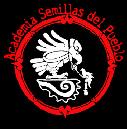Natural History, April 1997 v106 n3 p24(2)
Flopsy, Mopsy and Tipsy. (interpretation of the rabbit symbol in Aztec
iconography) Patricia Rieff Anawalt.
Abstract: The rabbit symbol in Aztec iconography is said to represent
ideas concerning drunkeness, which had both social and ritual significance
in Aztec culture. Rituals involving the alcholic drink, pulque, has
been represented along with the rabbit symbol to denote fertility and
social responsibility in drinking.
Full Text: COPYRIGHT 1997 American Museum of Natural History
Small but ubiquitous, the rabbit figured prominently in ancient Aztec iconography. Tochtli (Rabbit) was the eighth of twenty day signs in the Aztec ritual calendar. Used in combination with the numbers 1 to 13, the day signs yielded a 260-day cycle. The image of a rabbit also symbolized uninhibited, drunken conduct, something the Aztecs frowned upon. The Codex Mendoza, an Aztec pictorial manuscript dating from about 1541, shows three young people being stoned to death for drunkenness. "According to the laws and customs of the lords of Mexico;' says the accompanying commentary, "they forbade drunkenness except to those of seventy years of age, man or woman, if such old people had children and grandchildren. . . . [A younger person] who drank excessively died for it."
The association between rabbits and drunkenness may seem odd, but was actually not so remote. In pre-Hispanic times, the Aztec's sole alcoholic drink was pulque, which they called octli. Pulque was fermented from the sweet inner sap of the maguey, or century plant, and was made more potent through the addition of a root from a type of Acacia ("the diabolical root," missionary priests called it). The Spaniards noted that rabbits (Mexican cottontails) lived somewhere among the maguey plants, in dark and inaccessible places. The Aztecs also must have made this connection. They even considered Mayahuel, goddess of the maguey, to be the patron of the eighth day, Rabbit.
The associations went even deeper, though. Rather- than a man in the moon, the Aztecs saw a rabbit there (as do the Chinese). Like the prolific rabbit, lunar gods were connected with fertility, probably because the menses suggested a lunar cycle. In addition, the white, viscous pulque evoked milk and seminal fluid. Linked to the moon and the maguey plant, rabbits thus embodied a wide range of fertility symbolism.
Because of its positive and negative powers as a promoter of fertility and drunkenness, the Aztecs surrounded pulque with ritual and regulation. Fray Bernardino de Sahagun, the greatest of the Aztec chroniclers, was told that among a new ruler's first words to the people were admonitions concerning the malignant and multifarious results of pulque, the root of evil and perdition. And yet, as a source of strength, pulque was given to pregnant and lactating women and occasionally to warriors. The Aztecs also drank pulque as part of at least twelve annual ceremonies and honored a dozen or so pulque gods collectively known as the Four Hundred (that is, many) Rabbits. For example, every 260 days, on 2 Rabbit, a great stone caldron carved in the shape of a rabbit was set up before an image of a principal pulque god and filled to the brim. Old people and warriors were permitted to dip their sucking tubes into the foaming brew and drink their fill.
Among the neighbors of the Aztecs were the Huastecs to the north, a people dedicated to strong drink. According to legend, an early Huastec leader disgraced himself at the great celebration honoring the discovery of pulque. Only he among the assembled throng failed to stop imbibing at four bowls of the potent drink. He alone demanded yet another, became quite besotted, and before all the people, threw off his loincloth. Subsequent Huastecs modeled their own infamous behavior on this legendary forebear--he of the fifth bowl--resulting in a pattern of bizarre conduct. Fray Sahagun wrote that not only did the Haustecs deform their heads, file and stain their teeth, and dye their hair yellow and red, but the men also went about without loincloths and acted as though they were drunk.
In the disdainful view of the Aztecs, the Huastecs were completely outrageous, if mesmerizing. A prime example of Aztec ambivalence toward pulque, drunkenness, and all associated matters is their adoption of a Huastec fertility goddess into their own elastic pantheon. This deity was named Tlazolteotl, "Filth Deity" (referring to sexual excess), and had close lunar associations. In one pre-Hispanic pictorial document, the goddess is shown wearing a "lunar" nose ring, a design commonly associated with the pulque gods. She also stands beside a night sky where the moon is depicted as a huge, nose-ring-shaped pulque pot filled with a rabbit, providing another example of this complex of interlocking fertility symbols.
The promotion and maintenance of fertility was at the core of the Aztec religious system. In two of the Aztec's eighteen great annual ceremonies, even the youngest children were fed the potent beverage. And one Aztec pictorial contains a depiction of the festival Pillahuana (the drunkenness of children), during which boys and girls aged nine and ten are said to have danced, drunk pulque, and performed sexual acts.
Because of pulque's deep ritual significance, it is perhaps understandable that the indiscriminate use of the intoxicant in everyday life was considered profane. Only elders who had fulfilled all social responsibilities could indulge freely in pulque outside of a ritual context.
Following the Spanish conquest, drunkenness became an increasing problem in Mexico, augmented by the introduction of strong, distilled liquors. Nevertheless, one can still find pulque sold in the Indian markets of central Mexico, often out of a tin bucket in the back of a truck or sometimes out of an old wooden barrel. It is a pale, watery, milky-looking liquid that has no odor and not a great deal of taste. In some areas it is flavored with fruit, such as pineapple. A cup of it has about the potency of a beer--not as strong as the ancient Aztec drink, which was enhanced by the addition of the diabolical root.
Despite their strictures against drunkenness, the Aztecs were fatalistic about human fallibility and drinking. Their cosmology even provided a rationale for it. The Aztecs were involved in predicting the future, and the day of birth was thought to have a decisive impact on a person throughout life. No birthday was more lamentable than the woeful 2 Rabbit. Anyone born under its influence was doomed to drunkenness. Food, rest, personal appearance, family, self-respect, health, all were forgotten in a constant preoccupation with pulque. When a man born on that day was observed shouting, weeping, or wrangling while under the influence, it was said of him, "He is like his rabbit."
Patricia Rieff Anawalt is director of the Center
for the Study of Regional Dress at the Fowler Museum of Cultural History,
University of California, Los Angeles.
War Club - Riotstage


Hear more War Cub music @
Mexica Uprising MySpace
Add Mexica Uprising to your
friends list to get updates, news,
enter contests, and get free revolutionary contraband.
Featured Link:
"If Brown (vs. Board of Education) was just about letting Black people into a White school, well we don’t care about that anymore. We don’t necessarily want to go to White schools. What we want to do is teach ourselves, teach our children the way we have of teaching. We don’t want to drink from a White water fountain...We don’t need a White water fountain. So the whole issue of segregation and the whole issue of the Civil Rights Movement is all within the box of White culture and White supremacy. We should not still be fighting for what they have. We are not interested in what they have because we have so much more and because the world is so much larger. And ultimately the White way, the American way, the neo liberal, capitalist way of life will eventually lead to our own destruction. And so it isn’t about an argument of joining neo liberalism, it’s about us being able, as human beings, to surpass the barrier."
- Marcos Aguilar (Principal, Academia Semillas del Pueblo)
![]()
Grow
a Mexica Garden
12/31/06
The
Aztecs: Their History,
Manners, and Customs by:
Lucien Biart
12/29/06
6 New Music Videos
Including
Dead Prez, Quinto Sol,
and Warclub
12/29/06
Kalpulli
"Mixcoatl" mp3 album
download Now Available
for Purchase
9/12/06
Che/Marcos/Zapata
T-shirt
Now Available for Purchase
7/31/06
M-1
"Til We Get There"
Music Video
7/31/06
Native
Guns "Champion"
Live Video
7/31/06
Sub-Comandante
Marcos
T-shirt Now Available for Purchase
7/26/06
11 New Music Videos Including
Dead Prez, Native Guns,
El Vuh, and Olmeca
7/10/06
Howard Zinn's
A People's
History of the United States
7/02/06
The
Tamil Tigers
7/02/06
The Sandinista
Revolution
6/26/06
The Cuban
Revolution
6/26/06
Che Guevara/Emiliano
Zapata
T-shirts Now in Stock
6/25/06
Free Online Books
4/01/06
"Decolonize"
and "Sub-verses"
from Aztlan Underground
Now Available for Purchase
4/01/06
Zapatista
"Ya Basta" T-shirt
Now Available for Purchase
3/19/06
An
Analytical Dictionary
of Nahuatl by Frances
Kartutten Download
3/19/06
Tattoo
Designs
2/8/06


